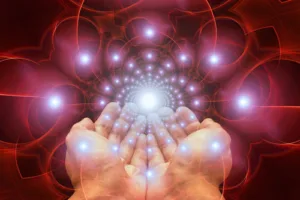Reiki is particularly simple to learn. It is generally taught in group classes and doesn’t require any knowledge of subtle bioenergy, nor does it require any background in healthcare.
A Reiki master is the only person who can teach you Reiki. One way to find a Reiki master is through referrals. You can also ask local practitioners of complementary therapies about reiki healing courses.
There is no guarantee that anyone claiming to be a Reiki master has the training and experience you are looking for in a teacher. That’s why you should inquire about the background of any master who claims to be a Reiki master.
A Reiki master’s website or brochure usually describes their training, experience, and classes. If you cannot find such information, you may speak with them to ask questions.
How Can I Find a Qualified Practitioner?
Ask the Reiki master about their teaching expertise, classes, schedule, fee, etc. Moreover, inquire about the Reiki master’s availability for ongoing coaching and group practice.
Choosing a Reiki master should not be just about finding someone with the qualifications, but also about finding someone with whom you feel a strong connection.
What are the three levels of Reiki training?
There are three levels of practice, with each degree building on the previous one and defining a distinct, narrow scope of activity. At all levels of training, daily hands-on Reiki self-treatment remains the foundation.
- The first degree is typically taught over 8-12 hours.
In this class, you practice Reiki self-care and share Reiki with others. It prepares you to give yourself daily Reiki for life.
The class provides instruction on applying Reiki to family members or friends and using Reiki when faced with acute situations and through informal spot treatments.
Nurses and other health care professionals commonly take Reiki classes focused on its application in clinical settings. A Reiki master gives an overview of Reiki’s history and precepts even though the course is generally experiential.
First-degree Reiki training includes four initiations. The Reiki master initiates students so they can channel Reiki energy. First-degree training is sufficient for most people who want to practice on themselves or their families.
- The second degree is distant healing:
The purpose of this class is to teach you how to replace physical touch with a mental connection when needed. That way, healing can still occur even when physical contact is impossible or inappropriate.
Psychotherapists, for example, may choose to learn Second Degree in order to provide a new depth of healing to their sessions. Hands-on treatments can also benefit from second-degree techniques.
- The third level is Reiki master:
Until recently, only experienced students who were willing to devote their lives to teaching others how to practice Reiki were invited.
Traditionally, master training is not done through coursework but through an apprenticeship with a Reiki master. Only Reiki masters can teach Reiki.
Reiki healing courses do not require any intellectual exercise, whether you’re learning it for yourself or someone else. Reiki proficiency is developed through practice rather than taking the next level class.





